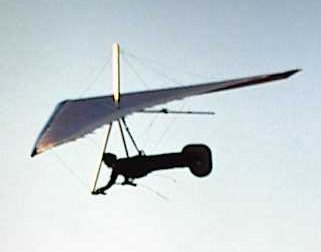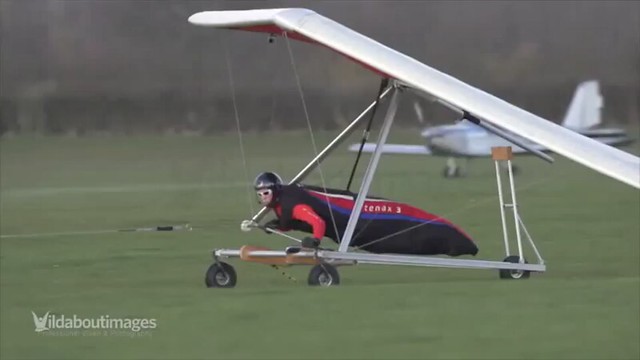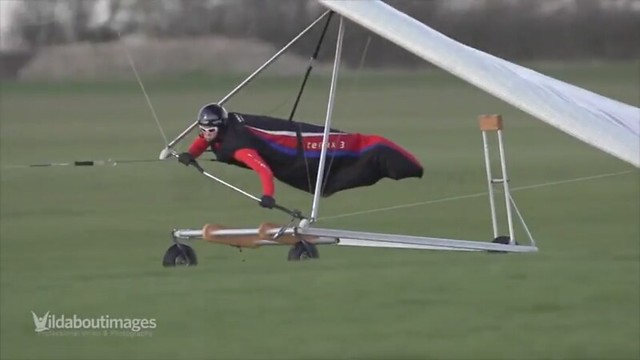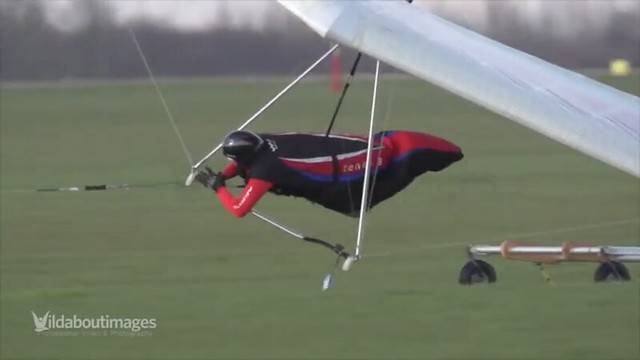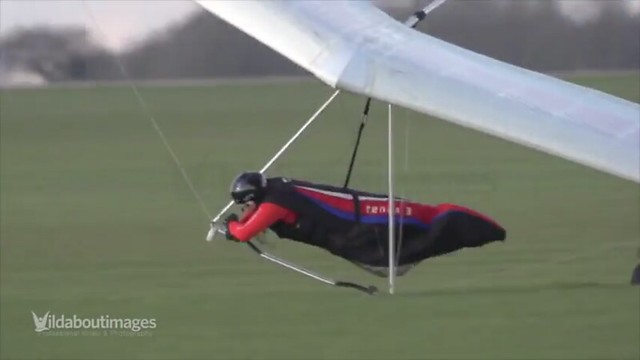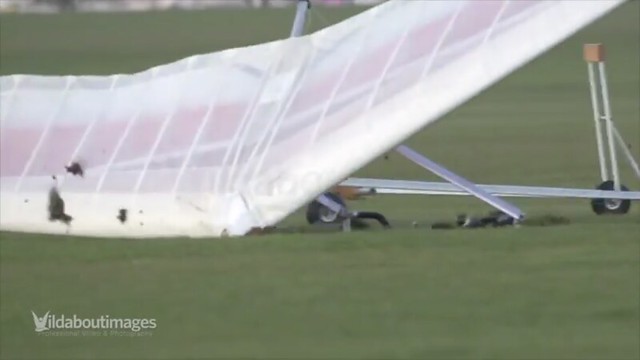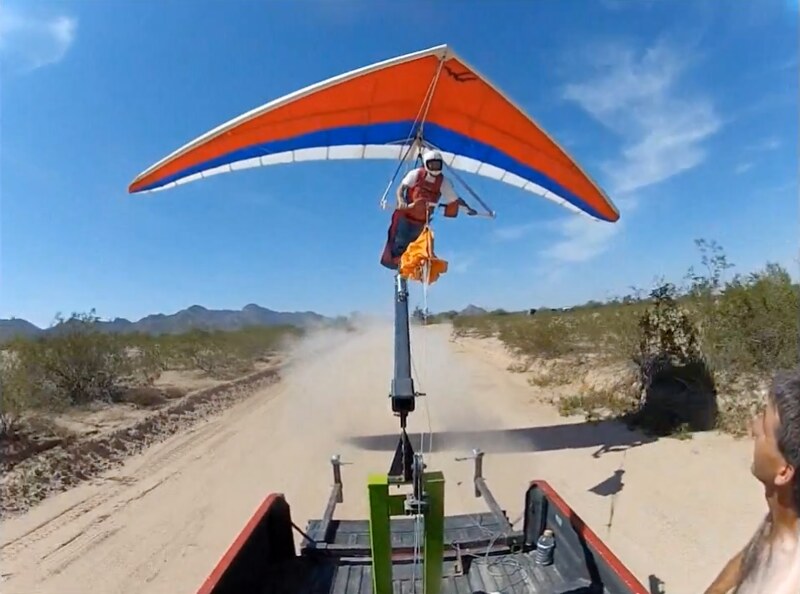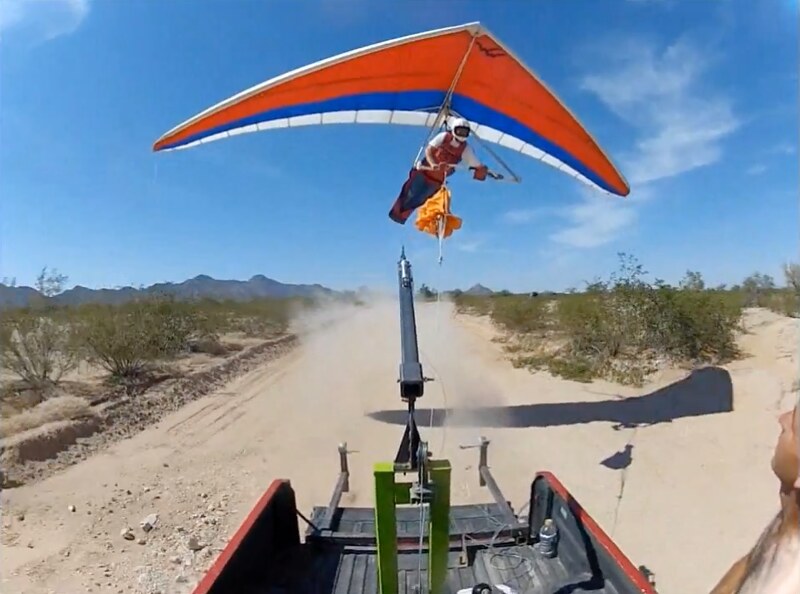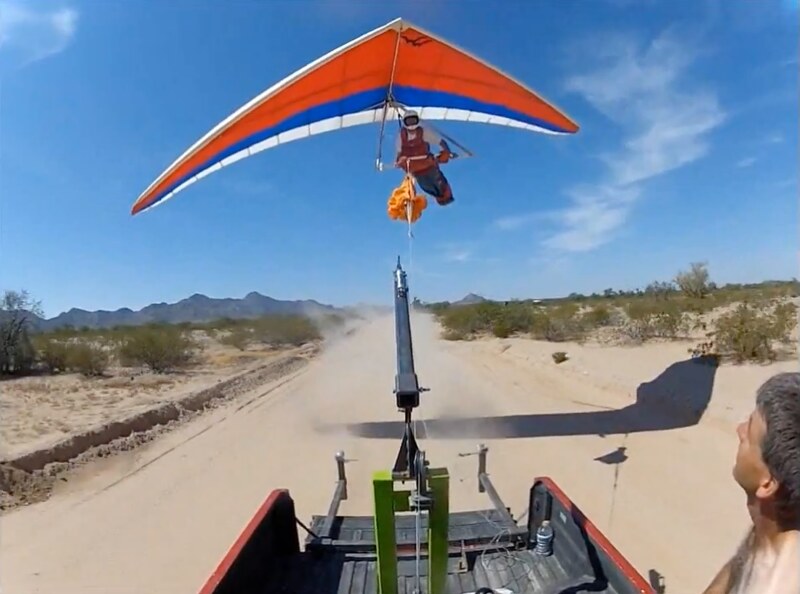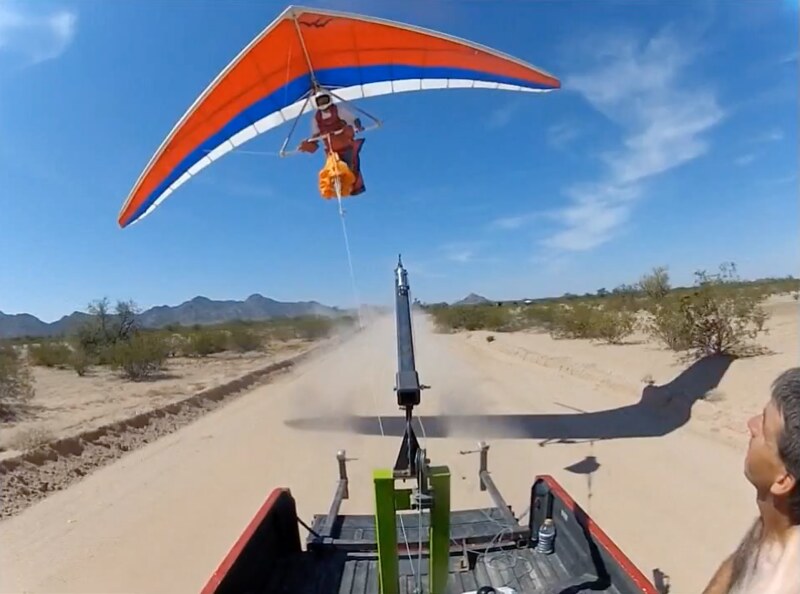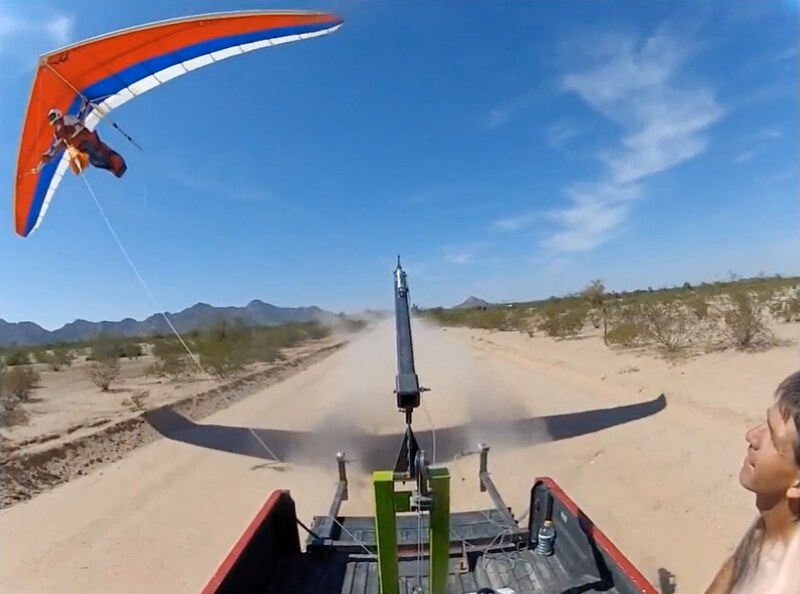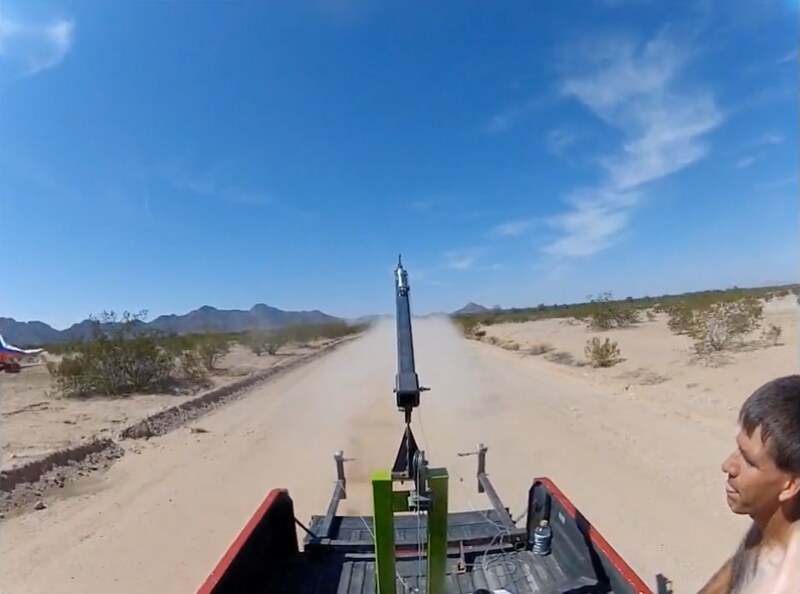http://www.hanggliding.org/viewtopic.php?t=35892
Roll control augmentation
Steve Corbin - 2018/02/28 22:19:12 UTC
Postings on other topics indicates that many, but not all, pilots would appreciate either reduced lateral bar forces or faster response times or both.
Well, many of our "pilots" are girls and fags. But REAL pilots appreciate both increased lateral bar forces and slower response times - 'specially in critical situations. Why do you think we:
- have Christopher LeFay's Five Second Rule for ramp launches?
- use easily reachable release actuators velcroed to control tubes for aerotow launches?
- rotate to upright and put our hands at shoulder or ear height on the control tubes as we go to final at two hundred feet?
If I'm not mistaken...
Perish the thought.
...the first Roll Augmentation device was the tall keel pocket.
Yeah, it was all about the keel. Nothing to do with how loads were transmitted to the WING.
This was invented by whom I don't know...
Just one of untold thousands of total fucking morons who had no clues as to how to apply high school physics to hang gliding to reach understandings of how our birds actually work.
...at a time when designers were first reducing sail billow in an effort to improve performance of flex wing gliders. If you know who did it first please let us know.
Please. Such a pity that he isn't being properly recognized and credited for such a brilliant innovation.
When more augmentation was needed the cross-bar was disconnected from the keel so that the two components were free to move relative to each other.
Please describe how / explain why you would design a glider with a pocket extending the keel way the fuck below the wing...

...while leaving the cross spars attachments on the keel.
I recall that this was first referred to as a "floating cross-bar", but later on someone pointed out that it was the keel that was "floating". I suppose that one term or the other will get the point across, so call it what you will.
- The UP Comet. My first glider. Total fucking lunacy.
- The fact that someone had to point out that it was actually the keel that was floating with respect to the entire wing should tell you all you need to know about the soundness of the "thinking" that led to this modification.
Both of these developments were low-tech...
...zero intelligence...
...lightweight, and inexpensive to incorporate into a glider's construction, and they worked.
And we had the data to prove it beyond any shadow of a doubt. Reminds my of the data we recorded in the trail and error period establishing a single loop of 130 pound Greenspot as the ideal pitch and lockout protector for all solo hang gliders.
So why do you think that now, close to four decades later, top performing and handling gliders tend to look like:
18-3015
http://c2.staticflickr.com/2/1577/26397779096_6c07682e71_o.png
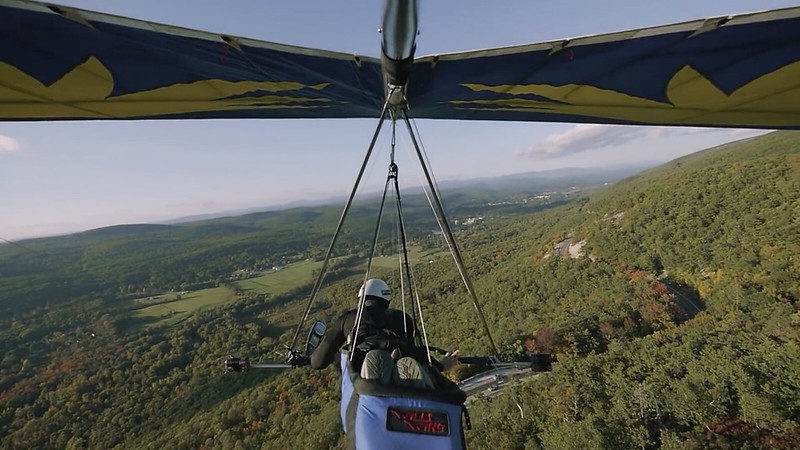
Everything pretty flat, tight, coplanar?
I personally have no need for my glider to be eligible for Class 1 competition, which stipulates that roll control must result from weight-shift alone.
For some time now I've wondered how an augmentation device that converts lateral bar forces directly into warping of the sail or wing twisting might look like.
Given any thought to the LeverLink?
So I've opened this new topic in the hope that a good discussion of the subject will take place.
What better place than Jack's Living Room, The worlds largest hang gliding community? Name a brilliant hang gliding innovation from anywhere in the past dozen years that DIDN'T spring to life from those discussions and the hard work of some of its outstanding members.
Hang gliders started out as cheap four-to-one slope skimmers people used for spot landing contests 'cause that was about the extent of their capabilities. They SLOWLY - due to the fundamental incompetence of the sport - evolved into the clean high performance flying wings we've had for the past couple dozen years or so.
One of the very few ACTUAL innovations that we saw - something that required some intelligence and cleverness - was the French Connection (and I don't know whom to credit). It was realized that in executing control inputs we were wasting muscle by having to RAISE ourselves while repositioning to load the wing at something other than trim and those trapezoidal contraptions made their appearances. (Also the pitch-only speed rail.)
But then that hardware started disappearing as we addressed the issue with VG, speed bars, taller control frames, kingpost suspension (well neutralized by all the assholes who think the purpose of the spread is no keep the carabiner from being crushed), backplated harnesses.
Forget the detachment of the cross spars from the keel. The only reason it was ever attached in the first place was 'cause it LOOKED LIKE the way to put the airframe together. The "floating crossbar", deep keel pocket lunacy accomplished the right thing for the wrong reason. But I'm pretty sure just regular common sense engineering would have brought us to were we've ended up anyway.
And we HAVE ended up. Hang glider design reached its final plateau eons ago - and now we're watching the Easy Flyer and the Big Crash.
Although my primary interest is in developing a whole new glider, a means of improving roll on our current designs is a more practical thing to pursue.
Hopefully we can come up with a system that, like the aforementioned ones, would be simple, lightweight, inexpensive and most importantly reliable.
Aerotow launch in thermal conditions (i.e., all of them)...
- So dangerous that we need a standard loop of precision fishing line to abort fifty percent of them before we've made it up to twenty feet. Anybody who attempts to use anything ten pounds heavier is not only willing to endanger his own like but that of the Dragonfly pilot so selflessly providing him an opportunity to soar. Exceptions are made only for the rare individuals who've been at an around all this plenty long enough to understand what's what and who's who.
- A fucking airline pilot at Quest relinquishes the grip of one hand for a second and a half to secure a dangling camera and from that instant on he's a dead man. Neither he nor his highly skilled, brave, selfless, modest, anonymous 582 Dragonfly can do anything to lessen the severity of the outcome. And bear in mind that he's using the only equipment with high enough standards to be acceptable to and sold by someone who's been at an around all this plenty long enough to understand what's what and who's who.
- Second professional pilot fatally splattered at the same launch operation in a period a bit over two years and there's never a suggestion that anything was being done wrong - let alone a call for things to be done better.
Practical hang glider aerotowing has now been around for over 35 years and not one glider manufacturer anywhere on the planet has ever built in a release system for aero (or anything else) that allows the pilot full/maximum/continuous control while releasing. The kinda thing that 100.00 percent of tugs have had since prior to the advent of the Cosmos trike. And the motherfuckers have refused to adopt or even look at the one I developed and made publically and freely available.
The goal, in my opinion, is a glider that doesn't require what we now call a Variable Geometry system.
Good job, Steve. Way to prioritize. These VG systems with their Rube Goldberg internal lines and pulley systems are real expensive, draggy, pains in the ass. 'Bout time somebody with the requisite integrity and guts took a stand against these things.
Ideally a VG would only be used to modify a gliders flight profile to allow a steeper angle of descent for approach to landing, although it could also be used for other reasons, such as adding or reducing stuff like camber and reflex and what have you. But I resent having to decide whether I get a flat glide or being able to maneuver. I want both at the same!
Get a sailplane.
An idea that I've thought about but haven't tried is a keel built so that parts of it could rotate, causing the trailing edge or the leading edges or both to be displaced one side up and the other down.
In describing this to friends the subject of adverse yaw comes up, and while it is a matter of concern I believe it can be accommodated as it is now, by having the just right amount of anhedral. However, it has been demonstrated that a vertical fin can be used with only minimal added weight and expense. My Sensor has one that takes probably only a minute to rig and weighs a few ounces, and some gliders have them for towing operations.
Well then, ya don't really need a safe release system if you have a fin. (And, of course, a proper weak link set up including acceptable knotting. But that goes without saying.)
Making a vertical fin that also can be used as an active rudder shouldn't require a lot of engineering. But using it as a control may be problematic as the glider would need dihedral to convert the skid induced by a rudder into a rolling moment.
But a rudder might be used as a "servo tab" like thing to help with the pilot's workload, by using the force it generates to move something else, such as rotating a keel. Something to think about...
I'll put it on the front burner.
It's been a long time since the floating keel/X-bar and the VG were originated.
And how long has it been since Wills Wing figured out that the floating keel/X-bar didn't actually do what it was assumed it would?
It just doesn't seem to me to be a difficult task to create something that would make high performance flex wings more entertaining to play with. But flight testing can be hazardous to one's health, and I suspect that that is one good reason why we don't see developments being tried.
Bullshit.
- Anybody who's worth shit at what he does KNOWS on the ground what his bird WILL DO in the air well before it ever gets there. And nobody has to run off thousand foot cliffs in strong thermal conditions for initial test flights. We can do those just fine standing on the beach at Dockweiler with a smooth fifteen coming in off the ocean or running into something lighter at the AJX LZ.
- We know that conventional hang gliders are only certified to be flown prone with both hands in proper position on the control bar. Yet the sport has ZERO problems:
-- having its participants - 'specially the least skilled and experienced ones - rotate to upright at two hundred feet and place their hands on the control tubes at shoulder or ear height regardless of conditions and bring their gliders to dead stops with perfectly timed whipstalls
-- aerotow launch with pro toad bridles which pull the occupant forward through the bar three feet forward of proper control position, easily reachable bent pin releases, and Standard Aerotow Weak Link pitch and lockout protectors into the most violent thermal conditions available
And people with Zeroes through Fives on their cards get crashed, bashed, crippled, killed at unsustainable rates through the DECADES and there's NEVER a problem with any of these moronic practices.
For testing purposes it might be a good idea to build a horizontal tail surface or canard to at least help a pilot feel confident with trying out a new device.
Feeling confident - invariably the first step in getting one's freaking neck broken. Second step - being focused.
Making it so that the new device can be disabled until a safe place to try it is reached would also be a good thing.
Yeah, let's add some complexity to the new device so it can be disabled until a safe place to try it is reached. Perish the thought that it should be properly designed and certified under safe conditions before being released to the public.
There's a "law of unintended consequences". It's not at all difficult to fail to see where one action could affect another, so it behooves one to approach any glider modification with caution. Bill Murray suggested "Baby Steps", and it's a good suggestion. Or was that Richard Dreyfus?
Cite some actual examples of this bullshit in the course of hang glider evolution.
http://c2.staticflickr.com/6/5788/23461251751_e98b9c7500_o.png
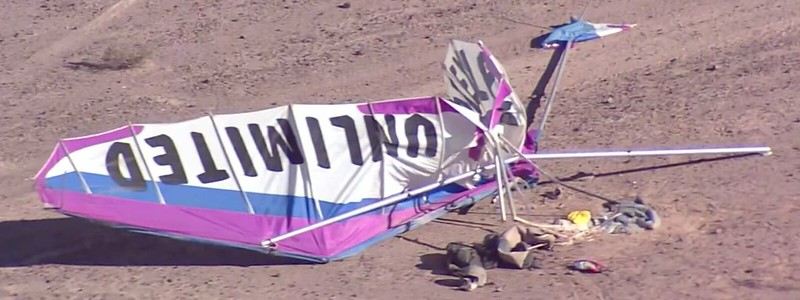
Whoa! The bridle snagged on the port wheel extension. Who coulda seen THAT coming? Such a total shock that he forgot that he had a parachute!
I spent YEARS developing a beautiful, clean, light, efficient, high capacity, built-in, both-hands-on-the-control-bar-at-all-times aerotow release that was acknowledged even by individuals whom I now totally despise as the masterpiece of engineering that it was and is. I provided detailed construction plans and specs and way-beyond-professional quality photo documentation. I was initially POSITIVE that it would just be a matter of a short time before it would became just as industry standard an option as a VG system.
Then I watched as The Industry continued to flood the market with the same deadly moronic cheap shit they'd been using to kill participants since the beginning of time, piss all over Yours Truly and my design, and lead the rank and file to do the same. ONE copy was built and installed in a tandem glider by someone else (Antoine) in France and put into service. And Joe Street in Ontario has managed to get some number of slap-on versions into circulation.
But at this point you could install one in every glider on the planet that was gonna be dolly or wheel launched and pulled by aero or steady low angle surface, totally eliminate lockout as an appreciable threat, and it wouldn't make any appreciable difference in the rate at which the sport is rapidly going extinct.
And you think you and your Jack, Davis, Bob Show douchebag forum buddies - none of whom have ever done shit in the way of getting an effective design of ANYTHING airborne - are gonna reinvent the hang glider and save the sport. None of you dickheads have ever even done shit to get anyone rolling a glider in prone on wheels or skids.


 That way when a weak link breaks on you, ITS A NON-ISSUE. Genius huh???
That way when a weak link breaks on you, ITS A NON-ISSUE. Genius huh??? 


